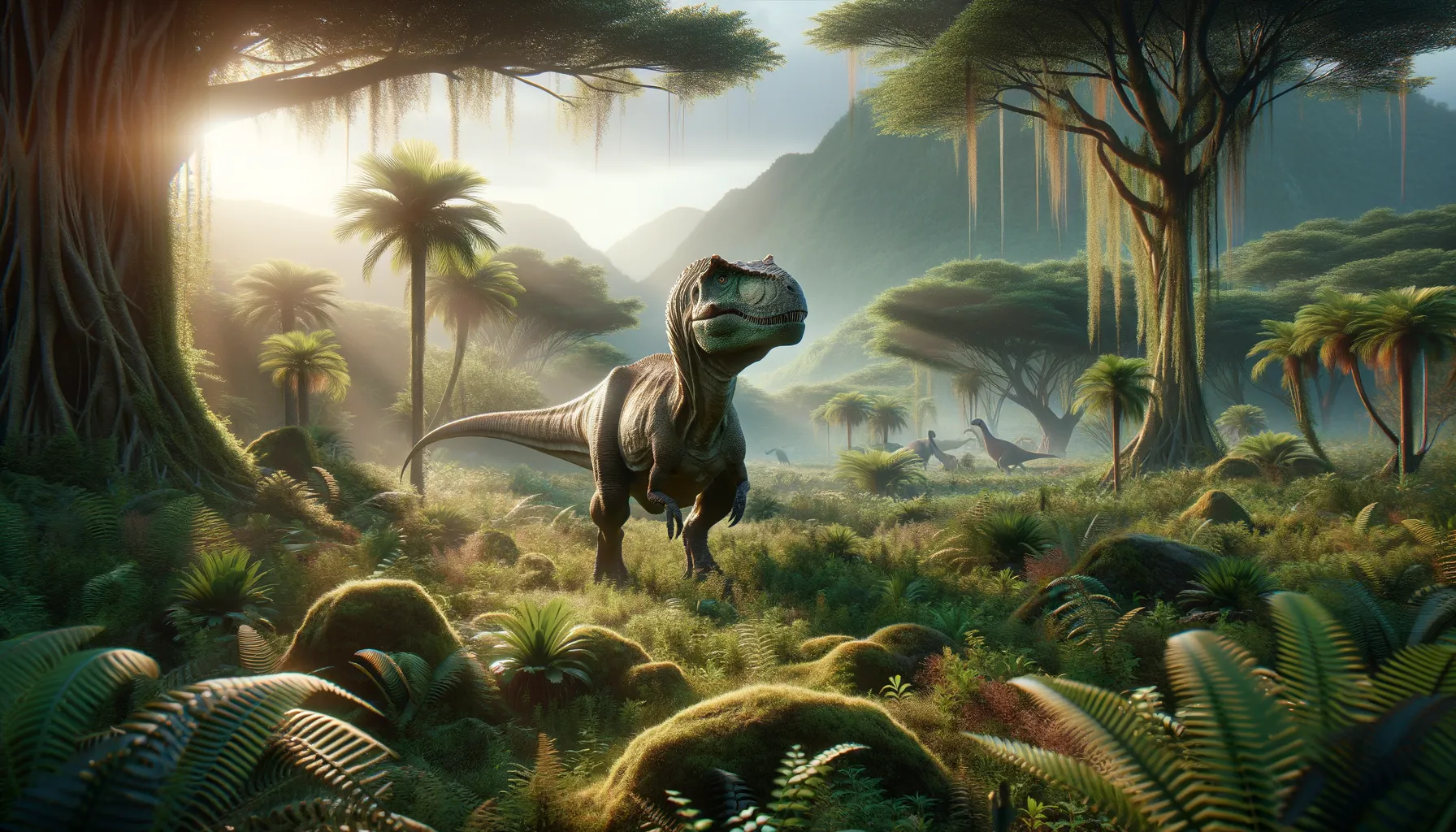
Dysalotosaurus
Swift herbivore navigating Jurassic landscapes.
Period
Jurassic
Length
Around 2.5 meters in length.
Height
Roughly 1 meter tall at the hip.
Weight
Approximately 80 to 100 kilograms.
Dysalotosaurus was a small, herbivorous dinosaur that roamed the lush environments of the Jurassic period. Known for its agile body and quick movements, it occupied a niche among the flora where it likely fed on low-lying plants and shrubs. This dinosaur's fossil remains offer essential insights into dinosaurian life in prehistoric Africa, contributing significantly to our understanding of ecological adaptations during its time.
Diet
Dysalotosaurus was a herbivore primarily feeding on low-growing vegetation such as ferns and cycads. Its teeth were adapted for processing tough plant matter, allowing it to thrive in dense vegetative environments.
Hunting
As a herbivore, Dysalotosaurus did not hunt. Instead, it foraged for plants, using its agility to escape predators and move efficiently through its environment.
Environmental challenges
Dysalotosaurus faced challenges such as fluctuating climates and varying plant availability. Predatory threats from larger carnivorous dinosaurs required it to stay agile and cautious. Furthermore, competition with other herbivores for food resources made efficient foraging strategies crucial for survival.
Speed
Moderate, likely around 20 km/h.
Lifespan
Estimated to be around 10-20 years.
First discovery
First discovered in Tanzania in the late 1900s.
Fun Facts
- Dysalotosaurus was a small herbivorous dinosaur that lived during the late Jurassic period.
- This dinosaur was discovered in Tanzania, Africa, highlighting the rich prehistoric life of the region.
- Dysalotosaurus means 'uncatchable lizard,' a name reflecting its agility and speed.
- It is closely related to the famous Dryosaurus, sharing similar physical characteristics.
- Fossils of Dysalotosaurus have provided insight into the growth and development of dinosaurs.
- The species is known for its well-preserved remains, including complete skeletons and juvenile specimens.
- Dysalotosaurus likely moved in herds, which helped protect them from predators.
Growth and Development
Dysalotosaurus likely grew rapidly during its early years to quickly reach a size less vulnerable to predators. Fossil evidence suggests juveniles had different skeletal structures to adults, indicating distinct growth phases. Sexual maturity probably occurred quickly, increasing their chances of reproductive success.
Habitat
It lived in forested regions with abundant plant life, including ferns and cycads. These areas provided both food and camouflage against predators. The presence of water sources nearby ensured a sustainable environment for maintaining its diet and hydration needs.
Interaction with other species
Dysalotosaurus likely coexisted with various other small herbivores and larger carnivores. It had to compete with other herbivorous dinosaurs and adapt to evade attackers effectively. Fossil evidence shows it shared ecosystems with contemporary dinosaur species and ancient flora.
Natural lifespan
Dysalotosaurus naturally lived up to around 20 years.
Reproduction
Dysalotosaurus was likely oviparous, laying eggs in nests on the ground. Parental care for the young is speculated, providing protection and training for foraging. Nesting habits suggest a degree of social structure and cooperation within groups during breeding seasons.
Social behaviour
It might have exhibited social behavior, possibly forming small herds for better protection against predators. Group dynamics would improve survival odds, allowing collaboration in foraging and vigilance. Social interactions could also help with communication and maintaining territory.
Fossil locations
Fossils of Dysalotosaurus have been primarily found in the Tendaguru Formation in Tanzania. This region is famed for its rich deposits, yielding numerous Jurassic-period fossils. Discoveries there have significantly contributed to understanding the mid-Jurassic fauna of eastern Africa.
